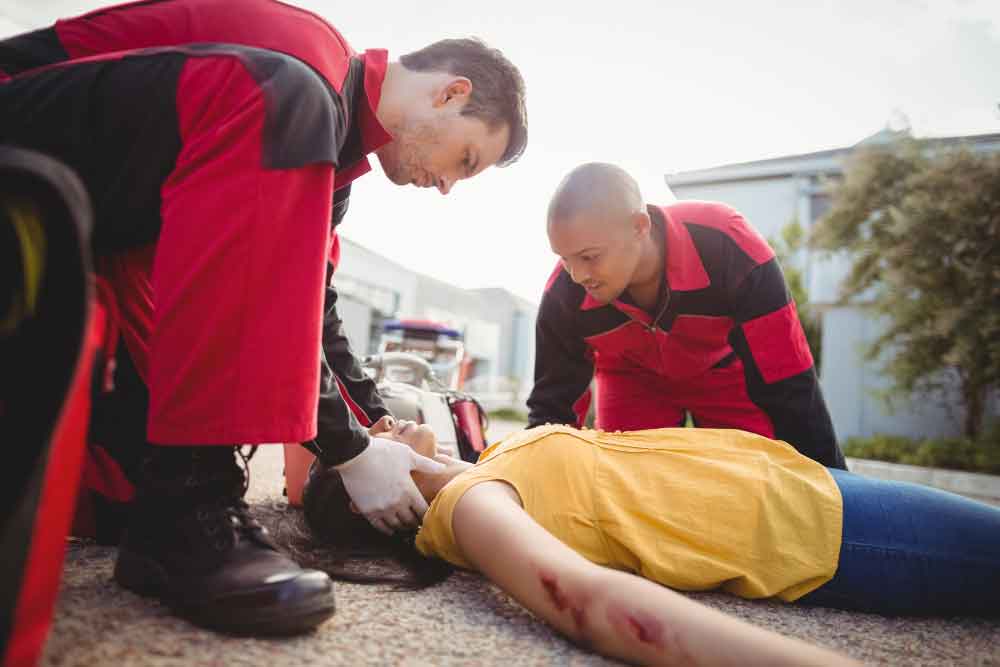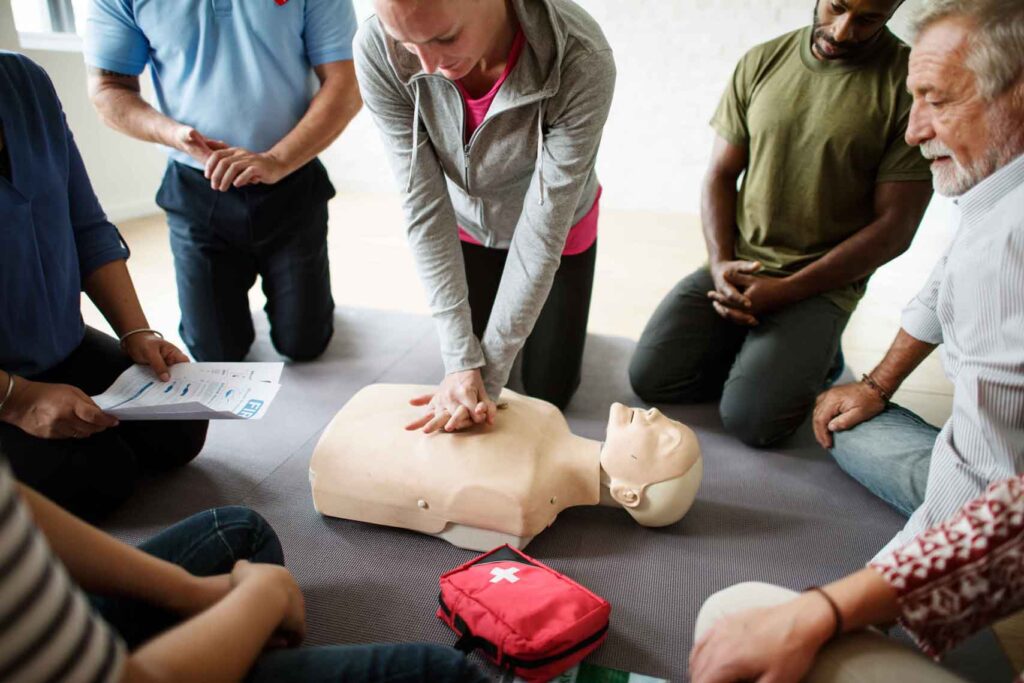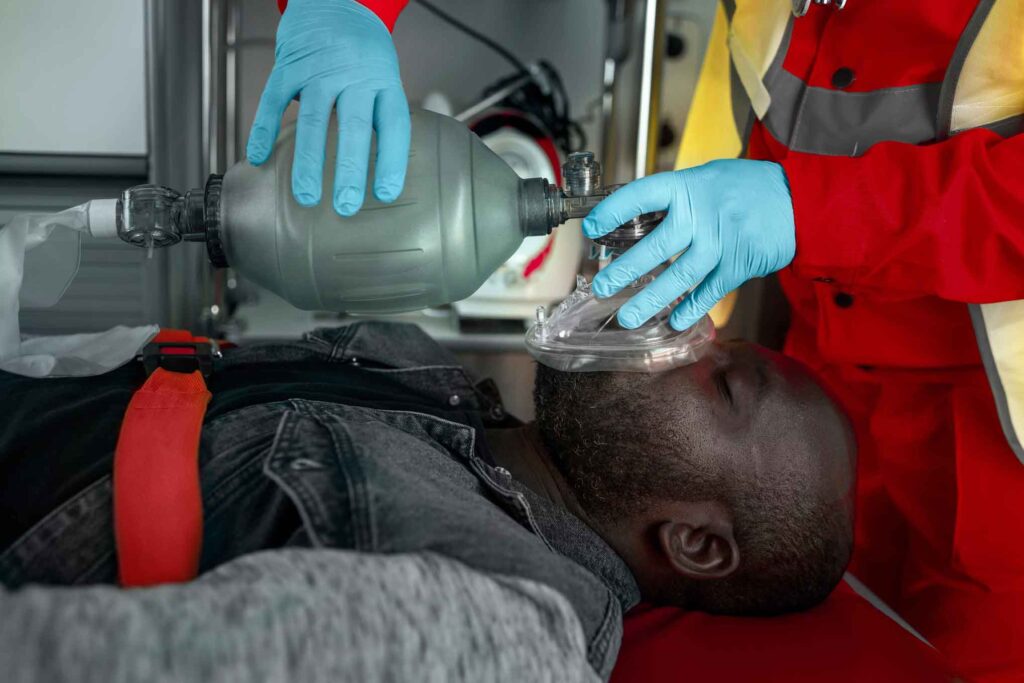More often fainting does not necessarily need emergency care if a patient regains consciousness within a minute. But you can opt for emergency care if you are seeing any symptoms that can be life-threatening or you are already in some critical condition and fainted while in it. We will discuss these conditions further in the blog.
In technical terms, fainting also called syncope that is referred to the condition of temporarily losing consciousness due to a low level of blood flow to the brain. The severity of fainting depends on the underlying health conditions (such as low blood pressure, irregular heartbeat, hypoglycemia, or stress)of that person. If the fainting is due to some health complication then it requires a medical professional’s attention.

What one can do if someone faints in front of him/her?
Fainting is considered non-threatening if a person regains his senses after a while but if this does not happen then there can be other complications. In this condition, one can help the patient by providing first-aid emergency service right there. Let’s look into those services :-
- In a condition where you think someone is going to faint or already fainted can dial the emergency number 911.
- Lie down the fainted person flat on the surface while facing up.
- Now give a thorough check for any possible injuries or other visible conditions.
- Is the patient breathing normally?
- Eliminate any option of seizure, shock, and stroke.
- Give the fainted person space to breathe and loosen up his/her clothes.
- Do not feed food or a drink to the unconscious person.
- If that person does not have an injury then elevate his legs off the ground by a bit to restore blood flow into the brain.
- Can provide CPR if that is the requirement or can use Automated External Defibrillator (AED) if present or call someone to fetch it for you.
Now some other terms and conditions that can be followed to consult a doctor if you have fainted :-
- Chest pain
- Irregular or abnormal heartbeat
- Short or fast pace breath
- Perplexed state of mind
- Blurry vision
- Fainted while turning the head
- Fainted more than once in a month
- Underlying health condition
Before fainting what can be the symptoms?
As understood by the above information that losing consciousness for a while due to a sudden drop in blood level reaching the brain, is known to be the condition of fainting.
Before fainting, you can feel the sweating of palms, dizziness, lightheadedness, abnormal breathing (fast and deep breathing), momentarily weakened eyesight (seeing spots or lights, blurry vision), or nausea.

What can be the possible causes of fainting?
There are a number of reasons that can bring you into a fainting state :-
- Dehydration
- Stress
- Anemia
- A sudden drop in blood pressure while standing
- Diabetes
- Heart complications
- Nervous system problem
- Seizure
- Stroke

For some people, fainting can also be due to malfunctioning of the autonomic nervous system that helps in regulating blood pressure and heart rate. This can be stimulated from :-
- Experiencing high-intensity pain
- Exposure to traumatic sights (such as blood)
- Increased level of anxiety
- Standing for longer period
- Exposure to extreme heat
- Straining in toilet
What is the treatment provided to fainted person?
A treatment procedure depends on the cause of fainting. For treatment procedures, you can also follow DRSABCD;
- D (Danger) :- First look for any danger near you or the patient and remove it. Do not put the patient as well as yourself in a dangerous situation.
- R (Response) :- Check if the patient is responding or not by calling them.
- S (Send for help):- In case no response from the patient call 911 or ask someone to help. Do not leave the patient alone.
- A (Airway) :- Inspect their mouth and throat for any blockages from food, vomit, blood, or stuck broken tooth by tilting their head back and lifting the chin up.
- B (Breathing) :- One of the important steps. Check if the breathing is abnormal or not at all. If found normal put the patient in a recoverable position.
- C (CPR) :- Perform CPR if the patient is breathing abnormally also do chest compression as soon as possible.
- D (Defibrillation) :- Use Automated External Defibrillator (AED).
Hence, the need to go to the hospital after fainting totally depends on the severity of the symptoms.

Get the diagnosis for any possible health condition after fainting at Texas Specialty Clinic. To book an appointment call us at (469) 545-9983.
